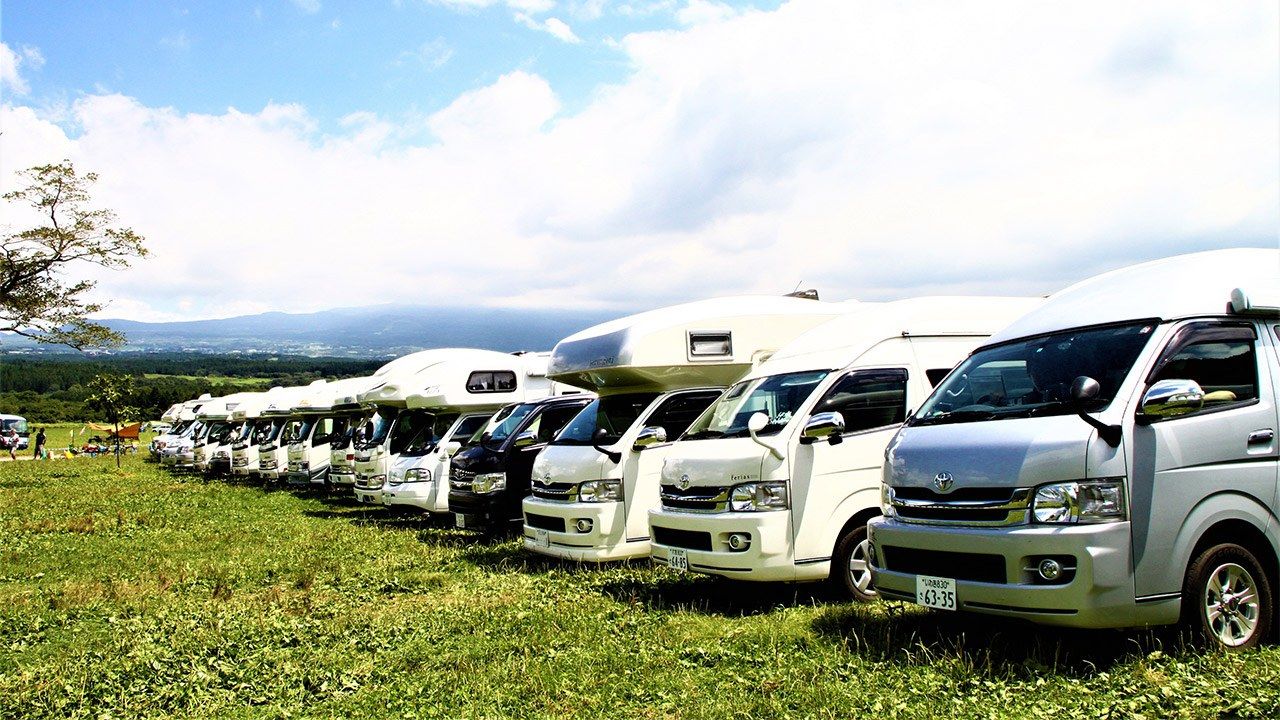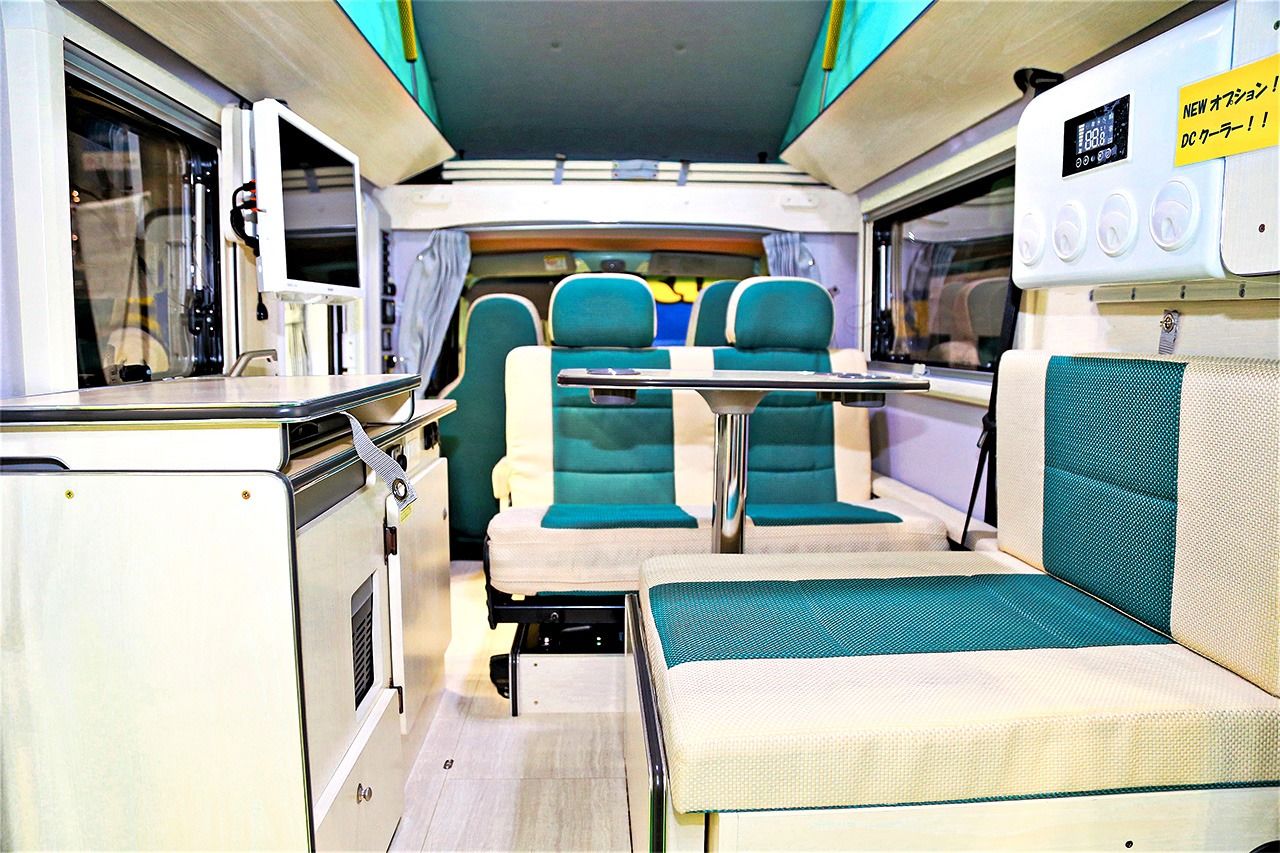
Japan’s Unique Recreational Vehicles Taking Root as Culture
Travel Lifestyle- English
- 日本語
- 简体字
- 繁體字
- Français
- Español
- العربية
- Русский
From an Enthusiast Hobby to a Familiar Culture
Japan has long been firmly set on the idea that “RVs are vehicles to go camping,” and for many years they were seen as the realm of a few passionate enthusiasts. The three years of the COVID-19 pandemic starting in 2020, though, changed that trend dramatically.
As people were urged to adjust to a “new normal” and avoid crowds, RVs developed a new appeal as useful ways to travel safely without close contact, serve a remote working base, and provide a quarantine space for infected people. This helped them break their enthusiast-only image and become a more familiar kind of culture for the masses.

Over 300 new models of RV were gathered for the 2023 Japan Camping Car Show, held in February. More than 50,000 enthusiasts visited the venue. (© Iwata Kazunari)
RV drivers have traditionally been older people enjoying their retirement, but more recently popularity has been growing among families with young children and users looking to focus on recreation. Now, a wider range of people are enjoying the pleasures of RVs, which can be used not only for outdoor activities and travel, but also for hobbies, business, and as a shelter in times of disaster.

Smaller campers some 5 meters in length and just 2 meters wide, a good fit for Japan’s streets, are popular here. (© Iwata Kazunari)

The interior of a camper van based on Toyota’s Camroad, in the five meter by two meter class. It has an impressively spacious interior layout sufficient for families to be comfortable. (© Iwata Kazunari)
The most popular use for Japan’s RVs is trips for sightseeing, taking dips in hot springs, and enjoying local cuisine, as they offer supreme mobility and help people travel in their own private spaces. There are some countries where sleeping in RVs is not recommended for public safety reasons, but in Japan many drivers take advantage of specially designated expressway service areas, parking areas, and michi no eki roadside stations to stop overnight.
However, these public facilities are assumed to be used for “short breaks and naps,” so long-term stays or full-on camping are considered a breach of etiquette. The JRVA has offered these “10 Rules of Good Behavior in Public Parking Lots” to improve RV user manners.
10 Rules of Good Behavior in Public Parking Lots
- No long-term stays
- No camping activities
- No use of shared electrical supply without permission
- No unlawful dumping of refuse
- Refrain from toilet drainage
- No draining of “gray water” tanks
- Take caution when running generators
- Be discreet when holding meetups
- No parking in handicapped spaces
- Avoid wasteful engine idling
To ensure that RVs move beyond a mere fad and become rooted as authentic culture, proponents are pushing forward with installing dedicated infrastructure for the campers. The number of RV parks officially recognized by the JRVA is also increasing. As of June 2023, there were over 350 across Japan. RV parks offer water supplies, drainage, and waste disposal, as well as large parking spaces, 24-hour restrooms, and 100V AC power supply. They are earning a name as safe and secure places to stay in campers.
Unique Evolution to Meet Different Needs
Japan’s RVs have special characteristics setting them apart from those of the United States and Europe, the leading global markets. These are symbolized by mini-sized camper vans and trucks designed for Japan’s traffic environment, known as “kei campers.”
Since Japan’s cities and tourist destinations see a lot of traffic and are filled with narrow streets and parking areas, trying to drive and park larger RVs there can cause real stress. Manufacturers responded by developing kei campers with compact bodies and outstanding mobility to offer easier traveling and camping for a wider use base.

This camper is based on a light-duty kei-class truck with an integrated shell. It offers stress-free driving on narrow roads and low maintenance costs. (© Iwata Kazunari)

The camper’s living space is so well-outfitted it’s hard to believe it’s based on a kei-class truck. (© Iwata Kazunari)
Japan’s unique kei-class vehicles—limited to a maximum length of 3,400 millimeters, width of 1,480 millimeters, height of 2,000 millimeters, and engine displacement of 660 cubic centimeters or less—are the base vehicles for kei campers, which are a class of RV that exist nowhere else in the world. Light-duty models adapted to the interior of a standard kei-class commercial van, providing sleeping space for one or two people, are the norm, but some models have a camper shell integrated onto the back of a kei-class truck.
Their greatest advantage is the excellent mobility their compact body size allows. They can run stress-free along narrow streets and park easily in normal city or tourist destination parking areas. Since they are built on a kei-car base, another benefit is a hefty reduction in running costs like expressway tolls, taxes, insurance, and maintenance fees.

Systems for off-grid living, like lithium-ion batteries to power air conditioning, have also seen major advances. (© Iwata Kazunari)
Another particular characteristic of Japanese-made camper RVs is their wide range of systems to supply electric power off the grid. Overseas RVs are designed around use at RV parks with AC power supplies, so there is little need to enhance their sub-batteries. However, since camper vans in Japan often stop at places without AC power supplies, like highway service areas and michi no eki roadside stations, these off-grid systems have rapidly advanced to allow people to stay electrified no matter what the location.

Campers are increasingly equipped with air conditioning in recent years to deal with Japan’s hot, humid climate. (© Iwata Kazunari)
Summer temperatures in Japan can reach 35°C or more, and the humidity is quite high. Such an environment is far from ideal for staying in a vehicle, and carries a real risk of heat exhaustion, so makers are boosting sub-battery capacity and enhancing charging systems so that air conditioning can run even without AC power supplies.
Inbound Travel Driving Rental Demand
As RV demand has grown, rental agencies specializing in campers have also been increasing. Prices can vary by shop and season, but usually run from ¥15,000 to ¥25,000 for 24 hours.
Many rental companies have opened desks at popular hubs, like Tokyo’s Narita Airport or Chitose Airport in the major tourist destination of Hokkaidō, and tourists from overseas are increasingly renting campers when they come to Japan.
These vehicles offer the opportunity to tour Japan freely, as they combine mobility and living spaces. When Japan hosted the Rugby World Cup in 2019, many overseas rugby fans toured the country in camper vans rented for long periods of time.
One area with particularly high inbound demand for camper rentals is Hokkaidō, with its wide-open spaces and beautiful natural vistas. It has more campgrounds than you can count, so finding overnight spaces is easy, and there are a range of locations to choose from, including highlands, ranches, seaside districts, rivers, lakes, and forests. There are also shops and campgrounds offering camping equipment rentals, so visitors can enjoy outdoor stays without lugging in their own gear.
During the day you can go sightseeing, enjoy a cookout and campfire back at the campground, and then sleep comfortably in the camper at night. Clever RV use allows easy access to the natural wonders of Hokkaidō.

Lake Shumarinai Campground, a natural-style camping field in Horokanai, Hokkaidō. (© Iwata Kazunari)

The Tomamae Yūhigaoka Auto Campground in Tomamae, Hokkaidō, has wonderful wide-open vistas. (© Iwata Kazunari)
Skiers and snowboarders flock to Hokkaidō from all over the world in winter to enjoy Japan’s powder snow.
Many skiers and snowboarders dream of the unique floating feeling of the bottomless powder in Japan, but it only appears when weather conditions are just right, so they must be careful about temperature and weather when choosing a ski area. Moving from one resort to another each day is difficult when staying at a hotel, but a camper lets skiers take their lodging with them, so they can tour the slopes as they wish.

Rental campers offer mobility perfect for trips to chase perfect powder. (© Iwata Kazunari)
Japan’s RVs have evolved in a unique way to meet the country’s traffic and climate environment. As their popularity grows, infrastructure and rental systems for RVs are taking hold, as well. We are now in the middle of an unprecedented camper boom, and there has never been a better time to enjoy RV life with ease, whether for daily use, leisure time, business, or hobbies.
(Originally published in Japanese on July 12, 2023. Banner photo: In Japan’s camper market, the van-conversion class [known as “Class B” in the United States] based on the Toyota HiAce, and the Class C Camroad-based Cab conversion are popular choices. All photos © Iwata Kazunari.)

